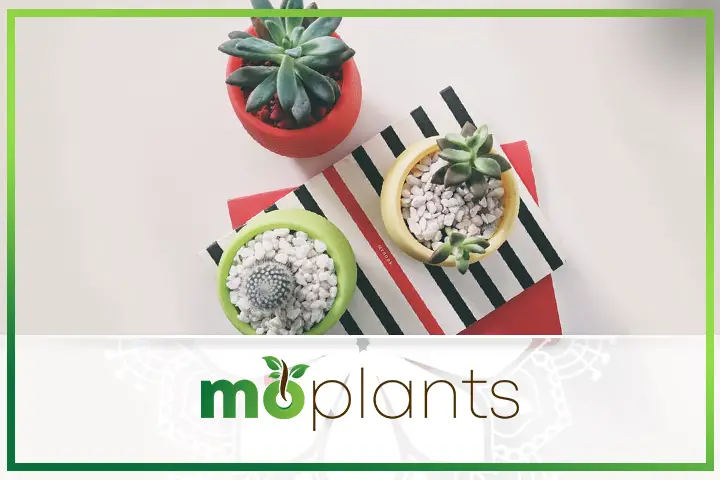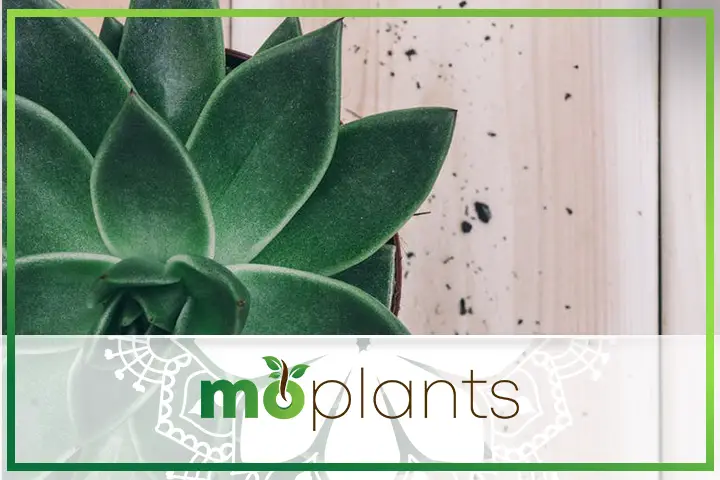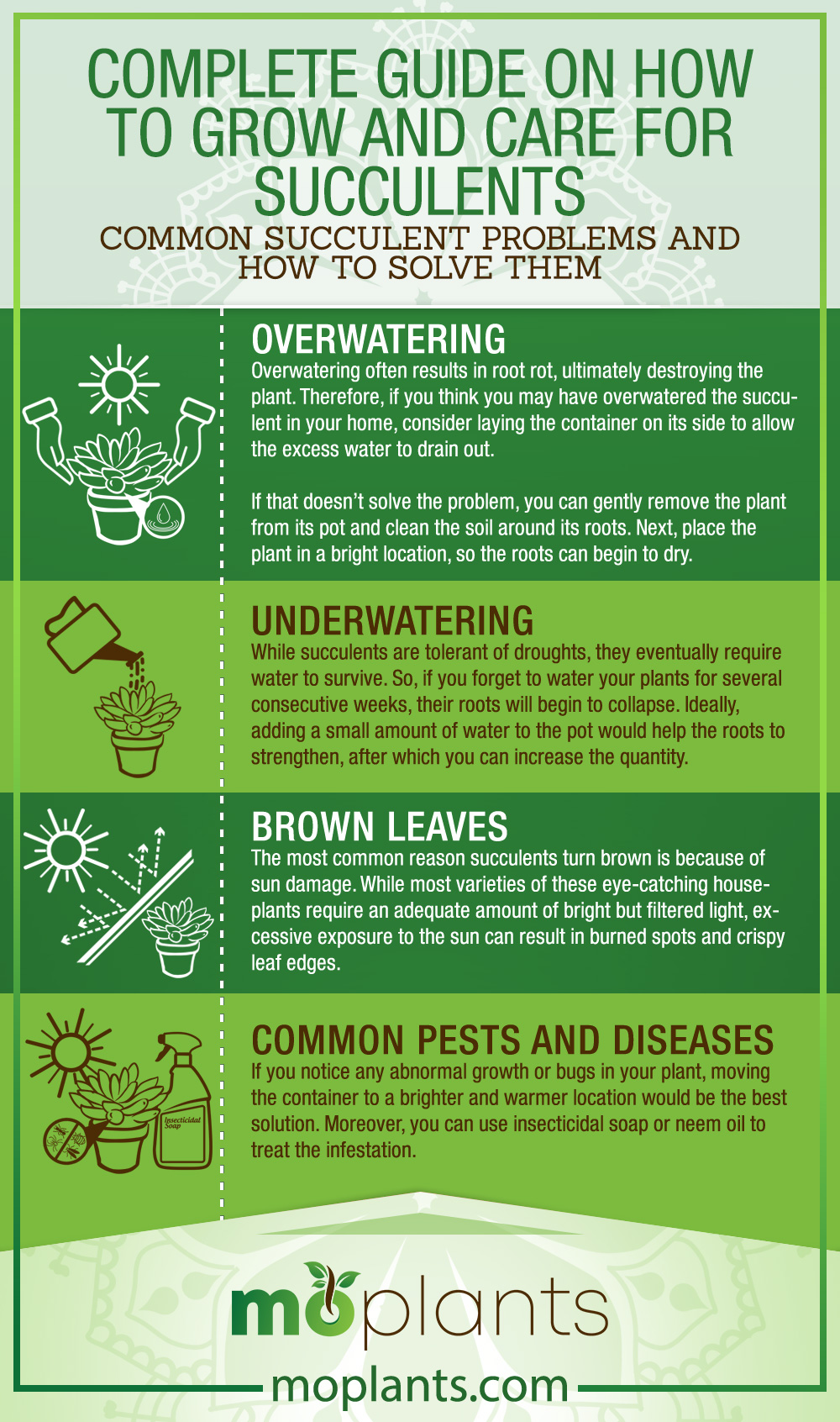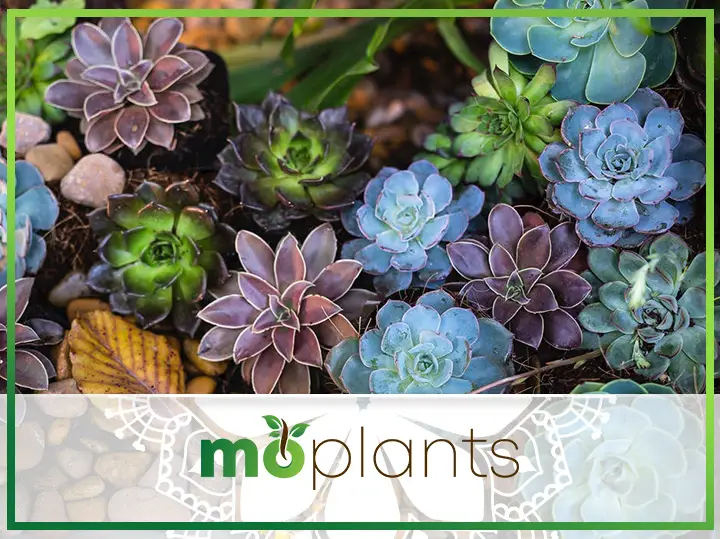Succulents have always been a favorite among beginners who are just learning how to take care of plants and busy home gardeners who don’t have enough time to look after their collection. These charming potted beauties are highly tolerant of drought and neglect, which adds to their reputation as one of the most low-maintenance houseplants.
The stunning foliage of these hardy plants makes them an absolute showstopper. You can place them in any corner of your home to add color and texture to the space or display them on your workstation to make your office environment a bit livelier.
With approximately 10,000 different varieties of succulent plants found worldwide and many more being crossbred by plant breeders, you are spoiled for choices. Though you can find a succulent in almost any color and size to complement your home décor, most homeowners and interior designers favor the compact potted varieties over the larger, sprawling ones.
It is also worth mentioning that nearly 60 different families of plants contain succulents. Therefore, different types of plants may boast drastically different appearances, making them even more interesting.
Moreover, succulents are indigenous to various regions. However, they tend to be dominant in Central America and Africa. The dry climate in these areas provides different species with ideal growing conditions.
Let’s learn a little more about these mesmerizing plants and what makes them so different from other forms of vegetation.
Introduction: Succulents

Succulents have a very distinctive appearance. Their telltale leaves are thick and fleshy, with most varieties containing white or transparent sap. These leaves serve as water storage organs for the plants, allowing them to retain moisture for a long time and survive in arid conditions. Some varieties also store water in their stems or roots.
Since all succulents aren’t created equal, each specie has a different leaf form and growth pattern. While some plants grow in the shape of tight rosettes, others feature trailing foliage. You can find these diverse plants with short and flat, long and narrow, or compact and paddle-shaped leaves. The most popular types of succulents are found in desert areas, but they are highly adaptable and can thrive in almost any environment.
Agave, aloe vera, jade plant, orchids, and snake plant are some of the most common types of succulents, each known for its unique features and appearance. Cacti are also considered an exceptional variety of succulent plants, as they require little water to survive.
Most of these plant species are slow growers and require little to no pruning, while others grow at a relatively faster pace and need annual repotting. However, almost all varieties need only a little moisture and will continue to flourish even if you forget to water them for a couple of weeks.
Depending on the type of houseplant you are planning to grow, you can either place it indoors or plant it outdoors in your garden. It is also important to learn if your chosen plant requires bright sunlight to grow or if it will grow well in a shaded location.
One of the best things about growing succulents indoors is that they don’t attract many pests. Additionally, they rarely overgrow, so you don’t have to worry about trimming and repotting them all the time. Some varieties also grow exquisite flowers, adding to their aesthetic appeal.
Furthermore, did we mention that succulents like aloe vera and snake plants are considered the best natural air purifiers? They can play a vital role in improving indoor air quality by producing oxygen and removing toxins from their surroundings.
How to Grow Succulents

Let’s look at some tips on how to grow succulents – one of the most cooperative houseplants in the world.
Planting and Placement
If you plan to grow succulents indoors, you don’t have to wait for a specific planting season. On the other hand, if you want to grow succulents outdoors, it may be a good idea to plant them in the summer or spring months.
Some succulent varieties require several hours of bright sunlight every day, which means you should ideally place them near an east or south-facing window in your bedroom, living room, or another part of the house. Meanwhile, the plants that require a shaded area can grow well in any corner of your home.
Moreover, if you plan to grow succulents for ornamental purposes, you can easily group different varieties for enhanced aesthetics.
Ideal Temperature
Though they are mostly native to desert regions and grow in hot climates, most succulents are highly tolerant of cold temperatures.
On average, these mesmerizing plants thrive in temperatures between 70 and 85 degrees Fahrenheit during the day and between 50 and 55 degrees Fahrenheit during the night. Some varieties can easily survive temperatures as low as 40 degrees Fahrenheit.
Humidity Level
Like the temperature, some succulent plants prefer highly humid environments while others do well in low humidity. Hence, it would help if you considered researching the individual growth requirements of your chosen plant to eliminate all doubts.
Nevertheless, on average, most succulents appreciate around 80 percent humidity in the air.
Exposure to Sunlight
Some species of the popular houseplant need at least five to six hours of bright sunlight to grow well. Meanwhile, other varieties thrive in darker corners of a home. In either case, prolonged exposure to harsh sunlight can cause the foliage to burn and get scorched, destroying the soft tissue and ultimately killing the hardy plant.
Conversely, if a succulent does not receive the required amount of sunlight, it may begin to get leggy.
Some popular succulents that do well in bright light include agave, desert pinwheel rose, prickly pear cactus, pencil cactus, and blue chalk sticks. Meanwhile, aloe vera requires filtered light and partial shade. Alternatively, some plants that grow well in lower light conditions include snake plants, mistletoe cactus, and ponytail palms.
Watering Frequency
When grown indoors, succulents should be watered once every two weeks in summer and once a month in winter. It is recommended to only water the plant if the top inch of the potting medium is completely dry. In addition, you should water the plant generously so the roots and leaves can store as much moisture as they need. Refrain from overwatering the plant as it may result in root rot.
The plants that grow outdoors are excellent at absorbing water from the soil. However, if the weather is too hot and sunny, you can water your succulents up to three times a week. As the weather begins to get colder, consider cutting back on watering.
Potting Mix
It is ideal to plant your succulents in well-drained specialized soil. You can find the succulent-specific potting mix in almost every local nursery or garden center. Nevertheless, if you can’t acquire the required soil, you can consider making your own potting medium by mixing normal soil with perlite.
How to Propagate Succulents
Each succulent has a different propagation method. While some plants produce offsets, others can propagate through their stem or leave cuttings. In either case, succulents are among the easiest plants to grow and multiply.
Propagating Larger Succulents through Cuttings
Here is a step-by-step guide on how to propagate succulents through stem cuttings:
Step 1: Pick a healthy stem and cut it at an angle using a clean and sterilized knife. Please make sure to leave about five to six inches of stem to encourage new growth.
Step 2: Plant the cutting in the soil and add a small amount of water to its container.
Step 3: Wait for the cutting to take root and transfer it into a slighter larger pot once it begins to grow.
Propagating Smaller Succulents through Leaves
Here is how you can propagate succulents through leaves.
Step 1: Place succulent mix on a flat tray.
Step 2: Pick a healthy rosette and carefully remove some leaves, starting at the base.
Step 3: Place the leaves on the soil with some distance between them. The leaf node must be above the soil.
Step 4: Once the cut end begins forming a tiny rosette, move it closer to the soil so the roots can begin to grow.
Step 5: Move the baby plant to a new pot when the leaves begin to get larger.
Succulent Care Tips

These are some of the most important succulent care tips that all home gardeners must know about:
Pruning
Most succulents are slow growers, so they don’t require frequent pruning. However, if your plant becomes too leggy, you may want to pinch back the stems. Similarly, you can use sharp and sterile shears to trim the leaves, so the plant looks symmetrical.
Cleaning
You can clean your succulents by wiping them with a soft cloth. This practice will also keep pests at bay. In addition, this succulent care method will ensure your plant looks fresh and shiny at all times.
Fertilizing
You can fertilize most varieties of succulents once a month during the growing season. However, as the season changes and the temperature begins to drop, please stop feeding the plant.
Repotting
Ideally, you should repot your succulent plants once their roots start poking through the soil, indicating they have become root-bound. Some succulents require annual repotting, while others can stay in the same pot for longer periods.
Choosing the Right Container
Terracotta pots with a drainage hole at the bottom are the best option for succulents of all types. Since this material has high porosity, it can absorb excess moisture from the potting medium, reducing the risk of root rot.
Infographic

Are Succulents Toxic?
Most succulents are not toxic to humans and animals alike. However, since most of these plants contain latex, they could trigger allergies in some people.
However, it is better to keep your children and furry companions away from the plants in your home as their stiff and spiky foliage may cause physical harm.
Common Succulent Problems and How to Solve Them

Each succulent variety may pose unique challenges. Nonetheless, we have rounded up some of the most common issues you may encounter while looking after these easy-going plant.
Overwatering
Overwatering often results in root rot, ultimately destroying the plant. Therefore, if you think you may have overwatered the succulent in your home, consider laying the container on its side to allow the excess water to drain out.
If that doesn’t solve the problem, you can gently remove the plant from its pot and clean the soil around its roots. Next, place the plant in a bright location, so the roots can begin to dry.
Once the foliage looks a little better, please place the plant in fresh and well-drained soil.
Underwatering
While succulents are tolerant of droughts, they eventually require water to survive. So, if you forget to water your plants for several consecutive weeks, their roots will begin to collapse. Ideally, adding a small amount of water to the pot would help the roots to strengthen, after which you can increase the quantity.
However, if the plant has gone too long without moisture, its roots may collapse and begin to rot once you start watering it again.
Brown Leaves
The most common reason succulents turn brown is because of sun damage. While most varieties of these eye-catching houseplants require an adequate amount of bright but filtered light, excessive exposure to the sun can result in burned spots and crispy leaf edges.
The best way to troubleshoot this problem is to remove the dead leaves and move your plant to a partially shaded location.
Common Pests and Diseases
Cacti and other succulents are not prone to pests and diseases, though they may develop a fungal infection due to overwatering. Occasionally, they may also become vulnerable to mealybugs and scales.
If you notice any abnormal growth or bugs in your plant, moving the container to a brighter and warmer location would be the best solution. Moreover, you can use insecticidal soap or neem oil to treat the infestation.
Infographic

Popular Types of Succulents
If you are looking to grow succulents indoors, these are some of your best options:
Here are the most renowned outdoor succulent plants that will make your garden the talk of the town:
Succulents FAQs
Here are some of the most frequently asked questions about succulents.
Do you grow succulents indoors or outdoors?
There are thousands of different types of succulents found across the world. While some varieties are compact and grow well indoors, others are larger and thrive outdoors – as long as you live in a warm and relatively dry climate.
Do succulents need sun?
Yes, most succulents prefer about five to six hours of indirect sunlight every day.
How long can succulent plants go without water?
Though it may vary with each succulent, most plants can survive between one and three months of no watering.
How long do succulents live?
Some succulents may only live for two to three years, while others can have a lifespan of 20 or more years.
To summarize, succulents are one of the best plants to grow as they require minimal care and attention.
Their captivating hues and breathtaking shapes can add an element of interest to any room. Furthermore, you can place the smaller potted varieties of the plant on your windowsill, bedside table, coffee table, or console table to introduce some color to your home. Alternatively, larger succulents do well in backyards and gardens, where they have more room to grow.

